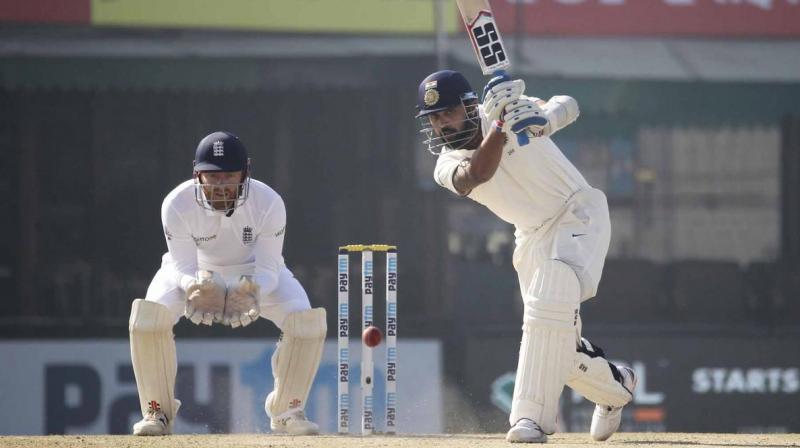Explained: Why Murali Vijay was not given out for obstruction
According to the rules of cricket, a batsman can be given out, if he obstructs a ball which is going on to hit the stumps.

Mohali: Murali Vijay might have scored only 12 runs in India’s first innings in the third Test against England, but he certainly left a lasting impression on everyone’s memory.
In the first ball of the third over of the Indian innings, Vijay played a solid defensive stroke off James Anderson’s bowling. Anderson immediately picked up the ball and hurled it towards the stumps.
However, Vijay who was standing outside the crease, was in the way of the ball, which hit his pads. The England players immediately went up in appeal, leaving the Indian fans confused.
Obstructing the field? Yes or No? https://t.co/hwTkDOteuO #BCCI
— DC Sports (@_DCSports) November 27, 2016
According to the rules of cricket, a batsman can be given out, if he obstructs a ball which is going on to hit the stumps.
However, Vijay’s case was a little different. Vijay was clearly standing outside the crease and had blocked the ball, which seemed to be going on to hit the wicket.
The sole thing that saved Vijay in this case was the fact that he had not moved one inch from his stance, from the time he played the defensive shot, to the time Anderson threw the ball at the stumps.
According to the ICC rulebook, a batsman will be given out due to obstruction, if “he wilfully attempts to obstruct or distract the fielding side by word or action.”
However, the rulebook also states: “It is for either umpire to decide whether any obstruction or distraction is wilful or not.”
The umpires decided, in this case, that Vijay had not “wilfully” obstructed the ball, as he had not made any movements to obstruct the ball.

